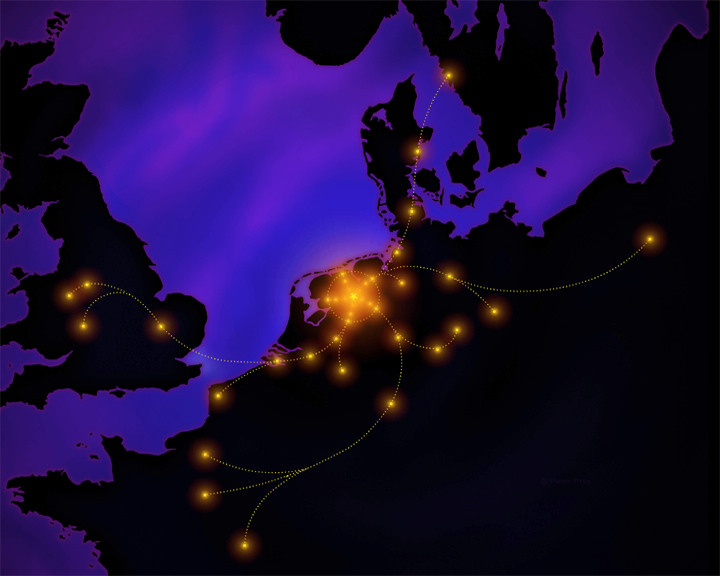Current research activities
|
|||||||||||
|
|
|||||||||||
|
Theory: My theoretical research concentrate primarily on Galactic cosmic rays. Despite numerous measurements of several properties of cosmic rays, we still do not clearly understand their sources and the nature of their propagation in the Galaxy. As for the sources, supernova remnants are the most favorable candidates. Supernova remnants are characterized by high velocity stellar material ejected from the explosion and expanding outwards with speeds greater than that of sound in the interstellar medium, thereby producing shock waves. It is now understood that such shock waves can efficiently accelerate cosmic rays. Experimental evidence for the presence of high energy particles inside supernova remnants is provided by the detection of non-thermal X-rays and high energy TeV gamma-rays from several remnants. Regarding their propagation, it is now well understood that, being charged particles, cosmic rays can be scattered by magnetic inhomogeneities or turbulence present in the Galaxy. This scattering leads to diffusive (random) motion in the Galaxy. Although we seem to have fairly good theoretical models on the propagation of cosmic rays and the nature of their sources, it seems that the reality is far more complicated. Recent data on several cosmic-ray properties provided by new generation experiments are found to be difficult to explain with our current theoretical understanding. My research aims in understanding this discrepancy between theory and measurements. Recently, I also started working on: - Acceleration and propagation of ultra high-energy cosmic rays - Fermi bubbles and the Galactic center activities Experiments:  LOFAR: I am involved with the measurement of very high energy cosmic rays with LOFAR (the LOw Frequency ARray). LOFAR is a radio telescope built in the Netherlands and its neighbouring for astronomical observations in the low frequency range of ~ (10-240) MHz. The telescope can also be used for cosmic-ray observations at energies above ~1016 eV. This is done by measuring the radio emission from air showers. The radio emission mechanism is not completely understood, but it is beleived to be mainly geosynchrotron radiation produced by the electrons and positrons contained in the air showers. LOFAR is expected to provide a clear understanding of radio emissions from air showers, and push the radio detection technique to an independent method of cosmic-ray measurements in future.  LORA: To assist the measurement of cosmic rays with LOFAR, we have built a small array of particle detectors LORA (LOfar Radboud air shower Array) in the LOFAR core. The array consists of 20 plastic scintillators distributed in an area of ~ 300 m diameter. Its main purpose is to trigger LOFAR with cosmic-ray events and to provide basic air shower parameters such as the shower core postion, the arrival direction and the energy of the primary cosmic-ray particle. LORA contributed to the first cosmic-ray detection with LOFAR in June 2011. During my PhD, I was extensively involved in building the array and in the development of the sofwares required for the data acquisition and the data analysis. |